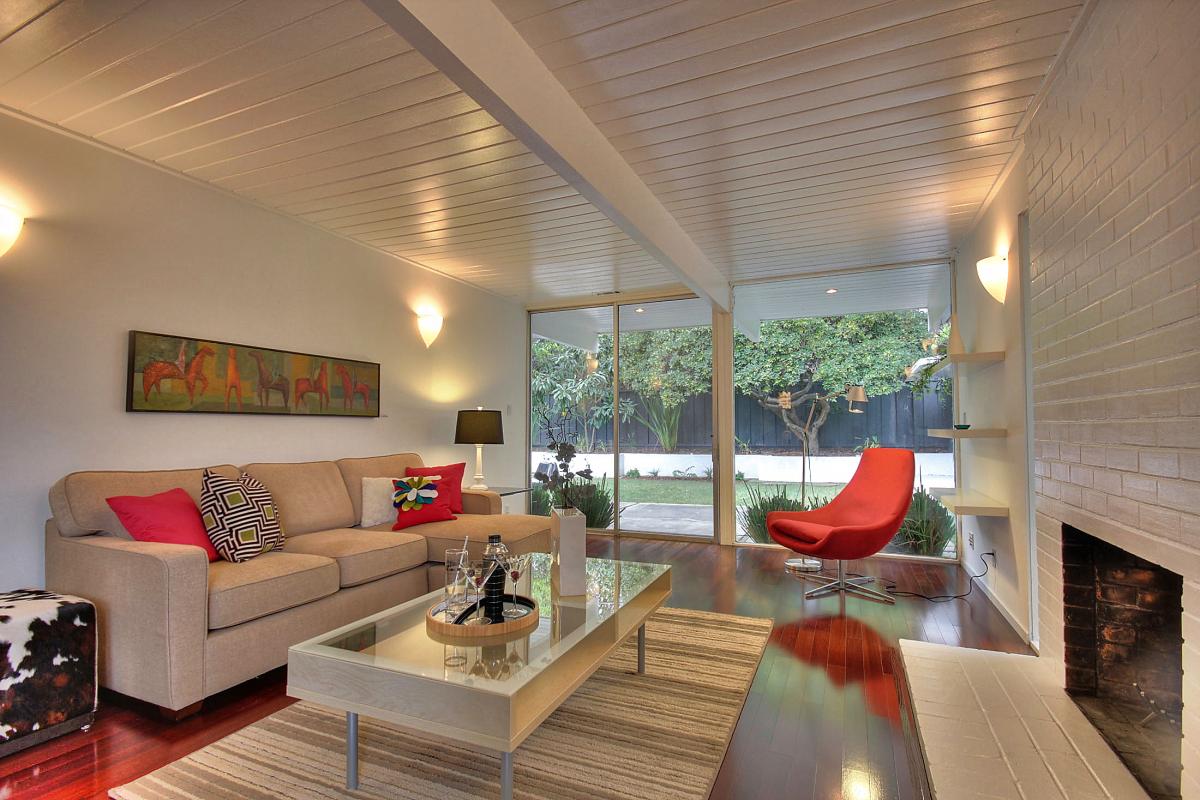Preparing Your Eichler for Sale in Today's Strong Market
 |
It's a great time to be selling a house, as we explored in the latest issue of CA-Modern (see the PDF below): Values are strong, the buying frenzy earlier this year has abated, and one can conduct a transaction like a civilized person. But to reap the best return on one's investment, it's still important to carefully and effectively prepare and stage the house for sale.
To get an idea of what that means, I asked realtors in the East Bay and Silicon Valley for some thoughts on how to prioritize repairs, upgrades, and staging to command the highest price for your Eichler or other MCM home.
Overall, the experts told me, the most important thing is to get it clean, get the yard landscaped nicely, and to make sure nothing is obviously broken. "The second it's not livable or it looks like it could be a distress sale, then the seller's return on investment is going to be diminished," Intero Real Estate's Janelle Boyenga told me.
Boyenga, an Eichler Network service provider who operates from Palo Alto to San Jose, joined Heidi Slocomb, an Eichler Network provider who specializes in the East Bay, in offering some thoughts for how to prioritize your prep.
Before doing anything, Slocomb said, the first step has got to be the pest report. "That's important. If you have to fix something, you have to find out first before you paint over it." Once the necessary repairs (if any) are identified, Slocomb said she generally walks her clients through the home, looking for clutter that can be removed and repairs that must be made. "Your goal is to get it looking as the architects working for Eichler conceived it, which is more minimalist. Even though Eichler owners are really savvy, they often can't visualize the home in its natural state."
 |
The Eichler's natural design is its best selling point, both experts said, so while it's good to paint, clean, and update the yard, one needn't worry as much about doing bigger jobs such as remodel work or large-scale upgrades. "I don't advise people to do expensive fix-ups in this market, because they don't have to," Slocomb said.
Eichlers essentially sell themselves if you let them, Boyenga said: "For Eichlers it's better to put as little money into it as possible and let the buyer do it themselves. Eichler buyers want to put their own finishing touches on it, so you have to be really careful when you're updating. If you don't nail it, your money was not well spent."
Even if a slew of upgrades can increase the value of the home, the cost of those upgrades can often negate that return, or even reduce it. Boyenga said she usually advises clients to set aside one to three percent of their asking price as a budget to prep the house for sale. With Eichlers, you can usually go closer to the one percent.
 |
Staging the home in some way is important, but a professional stager can be a huge waste of money if they don't get the style. "We stage an Eichler with a mid-century modern feel," Boyenga said. "The staging actually makes it really pop. That's what brings it all together. Staging hides imperfections, and it makes it feel like you can live there."
However, Slocomb added, "I don't recommend they pay a stager, because stagers don't usually have a clue. Most of them are into the typical ranch-style homes. If it's a vacant house, that's a different story."
For Slocomb, however, "staging is low on the food chain," because many Eichler owners already have strong collections of period-appropriate decoration. "To me, you've got to start looking at the integrity of the house. Start by standing out in the street and looking at the landscaping," then move inside and take a buyer's eye to the place, noting what needs fixing, cleaning, and painting.
The best bet is to focus on the basic things that make the house look livable. "To me, you've got to start looking at the integrity of the house. Start by standing out in the street and looking at the landscaping," Slocomb said. Tear out those old juniper bushes, and make sure there are no tree branches hanging precariously over the place. Inside, check for dry rot in hidden places, such as the tops of beams over the atrium. Barring any rot or other obviously needed repairs, a good deep clean and a new coat of paint is often all that's needed to bring out the home's natural beauty.
But for goodness' sake, don't paint over the mahogany panels!
Photos of expertly staged homes courtesy of Eric and Janelle Boyenga
| Attachment | Size |
|---|---|
| realestatetrendsfall2013.pdf | 205.63 KB |
- ‹ previous
- 466 of 677
- next ›




